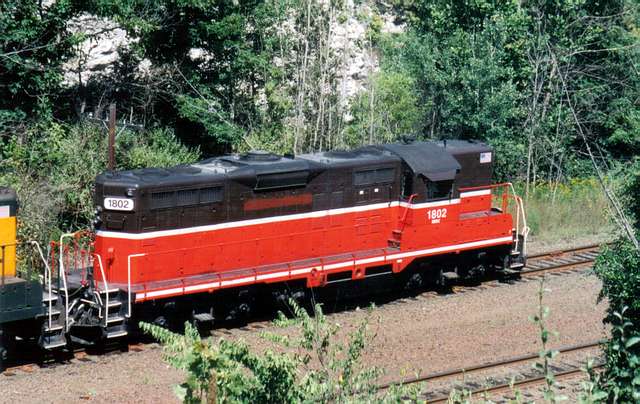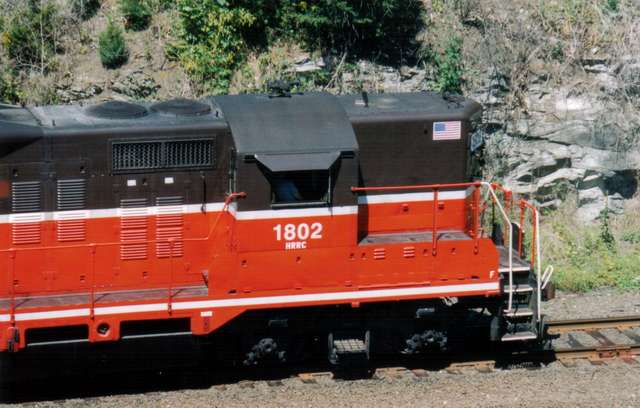Many pieces of equipment, especially logging engines were passed from company to company. Is the old name always sanded completely smooth before a new name is applied? It seems I have seen engines and rolling stock where you could see the old paint scheme coming through. I’ve wanted to reletter some engines for our lumber company and wondering if it would be alright to just paint over the lettering and then reletter for our company? Any thoughts?
Nope. They just painted over it. Even on modern things, you can see past lettering under the current lettering.
I’ve seen old cars that were so faded and worn that you could see the original paint and lettering showing through. But in this day and age they don’t seem to bother to repaint cars. they just paint out the reporting marks and add new ones. And older locomotives hardly ever get repainted. There are a lot of BN green and SF blue and yellow locomotives running around that all they have done is slap a BNSF decal on the cab and called it good.
I beleive they would take black over the the old lettering without sanding and then paint the new lettering right on top. Then for the weathered look lightly sand over the black just to let in hints of the old white lettering but still able to see the raised painted letters underneath the black paint.
Todd,
Thinking of something like that. I’ve also seen signs where there is an added statement saying the equipment is leased or financed by a parent company or holding company and I’ve thought of using something like that.
Many if not most of the steam locos I saw in person in the past such as on the SP, etc., were simply painted over. Even when the lettering was the same as previous it often didn’t line up perfectly with the older and you could see it under the black paint. When an engine or tender underwent major repair the paint as well as the lettering was marred. The entire vehicle or at least the major repair area, depending on how heavy the repairs, were painted over thus covering any existing lettering which would then have to itself be redone.
Repainting was also the time for any new style of lettering to be placed resulting in relatively recent repaints having a more modern lettering while many other pieces of equipment retained an older style for some time. When an engine was acquired by a new owner it might need complete shopping either by the selling railroad or by the new owner prior to operation. It would most likely receive new paint and lettering. If extensive shopping wasn’t required the new owner might merely blank out the old owner’s name and paint over with its own name or initials. The engine could be renumbered also or could retain its previous number. This is why you might see a poor shortline or logging line with only one engine numbered “4902” or something like that. Also the locomotive builder’s number was sometimes used as a road number.
As you can see you have a lot of latitude prototypically speaking. What you do depends more upon the image you are trying to create than anything else.
Ric - Looks like you have found an easy way to change lettering. I offer up this example of a GP-9 that came to the Housatonic Railroad (HRRC) from the Providence & Wooster. #1802 retains it’s P&W paint and number. The Housy simply painted out Providence & Wooster with a patch and added HRRC under the number at the windows.


Note the engine following is painted in Housatonic colors. The do have a paint shop, just never bothered with #1802. JR
Something similar happened to this locomotive… :lol:

Thanks for all the input and ideas, guys. I’m very familiar of the repaints and paint overs on diesels. I was looking more for the transfer of geared steam equipment amongst lumber companies. You see a whole lot of information about locos going from this company to that company, but the lettering always seems to be professionally blocked. I realise sign painters could do this rather quickly, but I don’t remember seeing layers of paint with other names. Sand blasting wasn’t available, sanding would be hard, by hand, but I guess there was a lot of steam to assists with removing lettering.
Oh yeah…there were times that a loco would be on its 3rd or 4th owner and still carry lettering it came from the factorywith…
Steve Featherkile said:
Something similar happened to this locomotive… :lol:
I’m surprised that no one has mentioned the visual humor shown here. I wish I knew who took the photo so credit could be given.